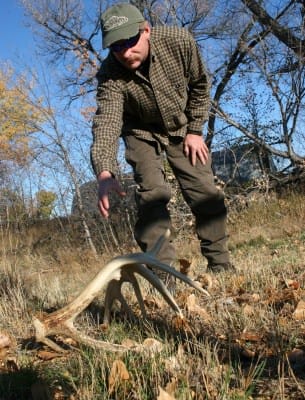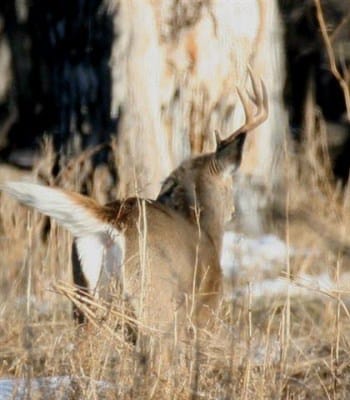
Why do white-tailed bucks spend so much time and energy growing marvelous antlers in the spring and summer only to cast them off their heads five or six months later?
“Scientists have pondered it for years, and we still don’t know exactly why,” said Dr. Mickey Hellickson, one of the foremost deer biologists in the world.
But the good doctor points to a couple of solid theories.
Some researchers believe bucks shed annually so they’ll have the potential to replace damaged antlers. If a buck had to live his entire life with snapped tines or a broken main beam, he couldn’t fight his rivals or posture for does, and he’d lose his place in the local buck hierarchy.
A second theory suggests bucks shed their antlers in winter and immediately start growing new racks that will be 10 to 40 inches larger the following fall to keep pace with their increasing weight and girth as they mature to 3½ years of age, 4 ½ and so on.
Here are some more interesting shed facts:
Some weeks after the post-rut (December in most regions, but January in some parts of the South) bucks’ decreasing levels of testosterone cause an “abscission layer” to form between antlers and their pedicles. As the connective tissue dissolves, antlers eventually get loose and fall off.
Bucks cast their racks as early as Christmas in some northern states and as late as March and April farther south. The antler drop varies widely across North America, though January and February are the primary months.
Weather, snow depth and especially food availability/nutrition can influence when bucks lose their antlers from region to region.
If your area had a noticeably early rut one year, bucks’ testosterone amounts will decrease earlier and many of them will cast their racks two to four weeks earlier than normal. Biologists recently documented an early rut in portions of northeastern Montana, and some of those bucks were shedding in mid-December.
Most older-aged bucks shed antlers earlier than younger bucks.
According to Dr. Hellickson, the specific time when a buck will shed his antlers may be determined heavily by his individual annual antler cycle. This cycle is independent of other bucks and is probably centered on each animal’s birth date.
Go Shed Hunting
Get out of the house, roam your hunting woods and look for some of those souvenirs. “Shedding” is fun and good exercise. Best of all, if you find an antler that measures, say, 65 inches you know at least one 160- class shooter survived last season and will be hanging out in those woods next fall (double the 65 for the other side of the rack, and give him 18 inches or so of spread). Put this giant on your 2011 hit list and start planning for ways and places to hunt him.

But don’t start your shed hunting too early. You don’t want to go into a woodlot and jump a one-antlered monster. He might not come back before he loses his other side, and that blows your goal of finding a matching set of big sheds, which is the Holy Grail for bone collectors.
It’s a good idea to glass feeding areas where deer congregate in winter (corn, soybeans, hay lots, etc.) until you see few if any bucks with antlers. Then start looking. Also, leave trail cameras on around feeding spots. Once you get images of antler-less bucks, start walking and looking.
Other Pointers For Finding Sheds
Check trails that link winter feeding and bedding areas. You’ll find some sheds along the walkways.
Check warm south- and east-facing bedding slopes where bucks spend a lot of time in the late winter.
A big mistake is to wander the woods aimlessly, looking too far out front and all around. Mark off small grids of land, walk slowly over each grid and look straight down at the ground for these cool woodland souvenirs.



